Our trained staff can help families make the best, most informed choices that enhance a loving encounter with their baby. We can help prepare the family for the birth of their baby by working with them on a birth plan prior to hospital induction.
Usually, you are given a day and time to arrive at the hospital. This delivery can take several hours or up to a couple of days. If they offer you a choice of times choose the morning as it will be mentally exhausting to go through this delivery.
They will normally take you to a quiet part of the labor and delivery floor. This is good because they are treating you as an expectant mom and your baby as a baby. Most hospitals will put a sign on the door like the wings of an angel. This will denote that you are delivering a saintly baby and for hospital staff to be cautious with their words.
If in the second trimester, you may be given medicine orally and/or vaginally to help your cervix to dilate and help your placenta to release from the uterine wall. These need to happen for you to deliver your baby and afterbirth. The medicine may take many hours to have any effect.
In the third trimester, you may be given Cervidil to start softening the cervix to efface and dilate, and you may receive Pitocin to induce labor.
A Baby Loss Family Advisor/Baby Loss Doula serve in these areas: (learn more)
- Help prepare you and your family for the baby’s birth
- Offers gentle support, guidance, and reassurance
- Assist in creating a birth preference plan factoring in the knowledge of pros and cons
- Aid in memory making
- Determine your needs and advocate for you
- Act as a liaison with the medical community (in person only)
- Avail herself for advice before, during, and after the birth of your baby
- Connect you with additional support resources
Unless you are having a C-section, you will go through labor. It may take time for labor to start and it may be a long labor. The pain of labor is a gift you can offer to your baby. The amount you need to dilate before delivery will depend on the size of the baby. It may not be much and there may not be that much pain. If it is painful you may choose an epidural to relieve pain. If you want to remember this time with your baby you may not want a narcotic type pain reliever. It is a reminder that you are a mom and your baby is a truly a baby that you love so much you will suffer for his/her safe delivery.
If you are delivering in the second trimester. The urge to push may just feel like you need to urinate. Be careful to have something inside the toilet when you sit on it to prevent the baby from going in the toilet water.
When you deliver, hopefully the nurse will clean the baby up and present him/her to you in a blanket that you can slowly open up and view all his/her features. Remember that babies are growing fast and that they need a lot of blood supply to grow that fast. Babies in the second and early third trimester have thinner skin so you may be able to see through their skin and the baby may look very red. Deterioration of the skin may have started so your baby may not look exactly as you had pictured them to look in your mind. Slowly open the blanket and look how wonderful and beautiful you baby was made I your womb. Look at each finger and toe.
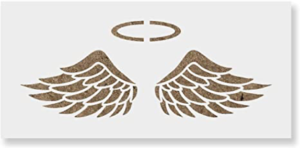
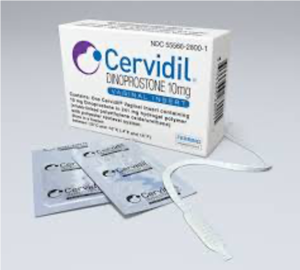

You may think you will never want to see the pictures but over 95% of those surveyed said they really value the pictures of their baby. We recommend that you bring a camera with a separate blank SD card and take lots of pictures. There are photographers who are trained to take these types of beautiful pictures of stillborn babies. You can find them at https://www.nowilaymedowntosleep.org/ but still take some pictures on your own. You can place the SD card and the DVD from the photographer in a safe place until you are ready to view the pictures.

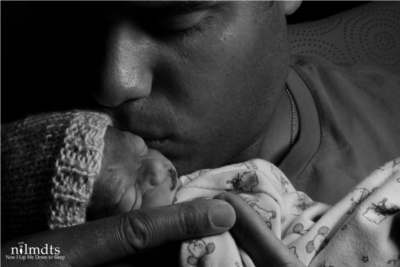
Please look at these options and make decisions on which of these activities you would like to do with your baby after delivery. Write it in a plan or print out our birth plan and check the options off that you choose.
- View your baby
- Touch your baby
- Hold your baby
- Kiss your baby
- Bathe your baby
- Dress your baby
- Diaper your baby
- Wrap your baby in a special blanket or two
- Rock baby
- Sing to your baby
- Dance with your baby
Please look at these options and make decisions on which of these mementos you would like to create and keep after delivery. Write it in a plan or print out our birth plan and check the options off that you choose.
- Footprints
- Handprints
- An outline of the baby on paper
- The tape measure that measured your baby
- A lock of hair
- Hospital bracelet
- Head cap
- Blanket
- Name card
- Clay imprints
- Plaster form of an arm or leg
- Spend time with your baby. You will never get this time back.
- Collect keepsakes you can put in a baby book or memory box such as little blankets, caps, hospital bracelets, footprints and handprints, clay imprints of feet.
- Don’t be afraid to say what you want for the baby. Be direct, clear, and respectful.
- Name your baby, and call him or her by name.
- Know that chromosomal testing can be performed from the placenta and umbilical cord, and may not require the baby itself.
- You can and should set boundaries. People may say the wrong thing. Forgive their ignorance, and tell them your boundaries.
- Let family members, especially siblings to the baby, say their goodbyes when you are up to it within the boundaries that you set.
- Take your time to make decisions. Discuss options with your spouse before finalizing any decision of your baby’s disposition. You can order items before the birth to avoid the cost of express shipping.
- Bring a special journal to journal your thoughts.
- Pray to God for physical, emotional, and spiritual strength as you deliver your miscarried baby.
- Ask friends to pray for you. Ask a friend to make a signup sheet so someone is praying for you the entire time you are in the hospital.
The handling and burial of a miscarried or stillborn baby often brings with it some special challenges. The baby’s skeletal system is not fully developed, and so the baby may not retain his/her natural form after birth. The baby’s body is very fragile, and the skin may be sticky to the touch.
If still in the womb, the baby would be peacefully floating in his/her own amniotic fluid. The baby’s skin and body were meant to be in amniotic fluid at this stage of pregnancy and not exposed to the air. Over time, the baby may “dry out” once exposed to the air and lose its beautiful appearance at birth.
At Heaven’s Gain Ministries, we recommend the Saline Bath Preservation Technique for your deceased baby. This requires a vessel. Our vessels allow the baby to be suspended in the natural state of water as nature intended, as opposed to being completely exposed. The use of the vessel filled with water gives the body of the baby a womb-like environment. We recommend a saline solution 0.9% saline or 0.9% contact solution, to “preserve” the baby by slowing down the deterioration process by using this natural preservative. We also recommend that families place the baby in a cold not frozen place when not viewing the baby to slow the deterioration also. These techniques can be used for a couple to a few days until burial.
Often times a miscarried baby does not look exactly as expected from the baby development pictures. When placed in a vessel with saline water, babies usually return to his/her naturally beautiful state for that stage in pregnancy.
This change in appearance allows other children and family members to view the baby while keeping the baby’s body safe. Also, the clear vessel provides a wonderful opportunity to take beautiful pictures.
Placing your baby in the womb-like environment of the vessel, and wrapping the bottle with a blanket allows family members to cuddle and rock the baby without worrying about skin breakdown.
You may want to find or order a vessel prior to hospitalization.
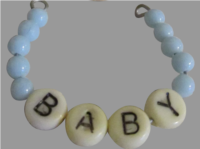
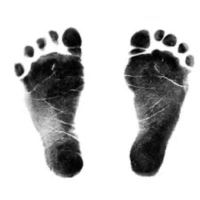
- Grieving is hard work, and takes time. Don’t rush it.
- Journal your thoughts. By journaling, you can release some stress, create memories, and promote healing. Listening to music related to loss may help during this process
- Allow others to help. Accept meals, help around the house, and babysitting. It is hard enough just to make it through each day. Letting others help can lift burdens from you, and allows others to contribute when there is little else they can do.
- You can find caskets and urns at https://staging.heavensgain.org/products/
- Find a support group in your area. You can check with SHARE or Faces of Loss/Faces of Hope. Also, you can check with Family Loss Baby Advisor/ Loss Doulas International.
- You will always miss your baby, but it will not hurt this badly forever. In time, you will find your new normal, and laugh and have fun again.
- You are not alone. Pregnancy loss is not that unusual. One in four pregnancies is lost in the first trimester. One in thirty-three babies die in the second trimester. One in 160 babies die in the third trimester. There are people near you who understand how hard this kind of loss is. Try and connect with one of them. You can ask for a pregnancy loss peer, check with a support group, or ask for a loss doula in this time of sorrow.
- Place keepsakes in a special place
- Crying at various times though out the day is normal but also schedule special times to think about your baby, grieve, and heal.
- Continue to pray. Blameful thoughts may come to mind, dismiss them and pray for the strength to make it though each day.
- We are here to help. Contact one of our client advocates at staging.heavensgain.org or (513) 607-6083


